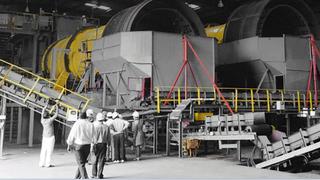If you are in the higher tax bracket (20 or 30 per cent) and looking to lock into attractive rates for 10 years or more, the tax-free bonds being issued by Rural Electrification Corporation (REC) are a good option.
The yields on tax-free bonds are linked to those on government securities (G-secs). The yield on the 10-year G-sec has risen sharply and is now 8.6 per cent, close to the highs seen during the financial crisis of 2008. There is a good chance that these yields will moderate. So, it is a good time to lock into the tax-free bonds on offer now.
REC, a government-controlled lender, is offering retail investors (those who invest Rs 10 lakh or less) attractive rates — 8.26 per cent annually on 10-year bonds, 8.71 per cent for 15-year, and 8.62 per cent on 20-year instruments. For other investors, the rate of interest is 0.25 percentage points lower.
The interest will be paid out on December 1 every year and is not subject to tax. Investors in the higher tax brackets can earn higher interest from these bonds than from bank deposits, after accounting for taxes.
Consider this: The best rate being offered on five-year bank deposits is 9.5 per cent, which compounded quarterly works out to 9.84 per cent. But investors paying 20 per cent tax will get a return of 7.82 per cent after tax and those in the 30-per-cent bracket will receive only 6.8 per cent. This is lower than what REC’s tax-free bonds are offering.
If you can invest for the long-term, consider the 15-year bonds for the best rate.
But buy the REC bonds after setting aside funds for investing in public provident fund (PPF). In addition to healthy tax-free returns (8.7 per cent currently), PPF offers tax deduction on the initial investment up to Rs 1 lakh.
The initial investment in REC bonds is not eligible for tax deduction. REC’s bonds are secured and have a credit rating of AAA, indicating highest degree of safety.
REC finances rural electrification projects in India. The company’s loan book (standalone) as on March 2013 was Rs 1,27,356 crore, and its capital adequacy was a comfortable 17.7 per cent.
Its profit has grown at an annual average of 31.6 per cent over the last four years to Rs 3,818 crore in FY-13. Its net interest margin last fiscal was 4.7 per cent, and net non-performing assets were a moderate 0.32 per cent of loans.







Comments
Comments have to be in English, and in full sentences. They cannot be abusive or personal. Please abide by our community guidelines for posting your comments.
We have migrated to a new commenting platform. If you are already a registered user of TheHindu Businessline and logged in, you may continue to engage with our articles. If you do not have an account please register and login to post comments. Users can access their older comments by logging into their accounts on Vuukle.